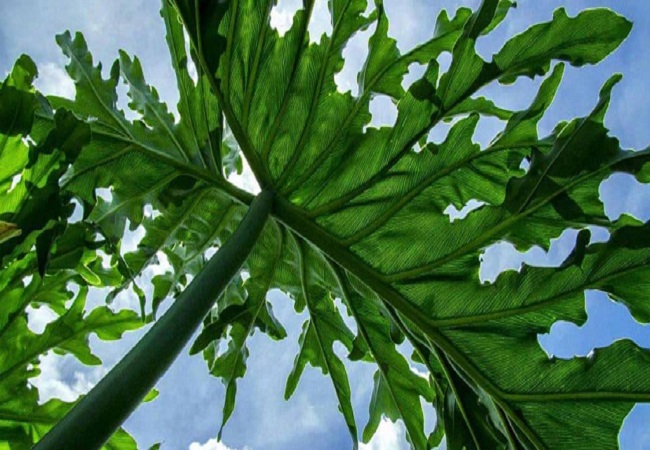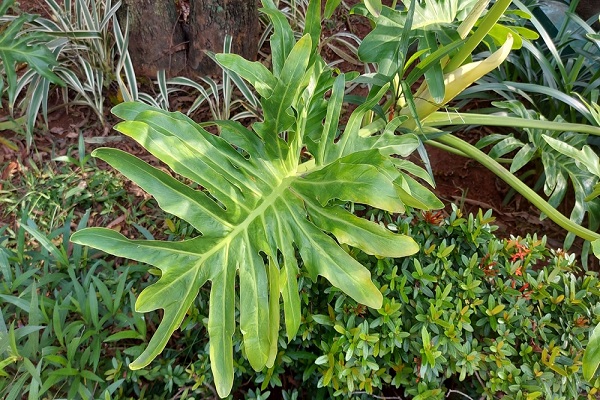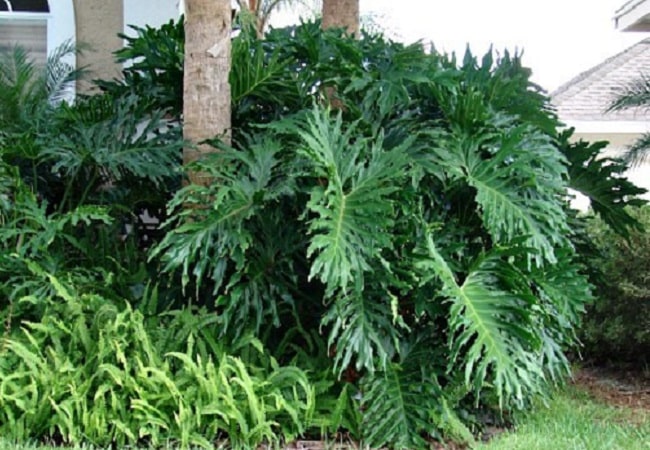Propagating plants can be a rewarding and cost-effective way to expand your indoor garden or share your favorite species with friends and family. One plant often sought after for propagation is the Philodendron selloum, a popular houseplant known for its lush, tropical foliage.
If you’re curious about how to propagate Philodendron selloum and create new plants from existing ones, you’ve come to the right place. In this guide, we will express the step-by-step process of propagating Philodendron selloum, allowing you to successfully multiply this beautiful plant and enjoy its presence in various corners of your home or garden.
Quick Navigation
How To Propagate Philodendron Selloum Methods

Philodendron Selloum can be propagated using three primary methods: stem cuttings, air layering, and division. Each method has advantages, so you can choose the one that better suits your preferences and available resources.
Stem Cuttings
Stem cuttings are the most common and straightforward method of propagating Philodendron Selloum. Follow these steps to propagate your plant successfully:
Materials Preparation
Gather the necessary materials, including sharp, sterile pruning shears or a clean knife, a clean container fill with water or a well-draining potting mix, and optional rooting hormone.
Selecting a Healthy Stem
Choose a stem at least 6 inches long with several healthy leaves. Ensure that the stem is free from any diseases or pests.
Taking The Cutting
Cut the stem just under below a node, which is the point where a leaf emerges. Remove any lower leaves, leaving only a few at the top.
Rooting The Cutting
Place the cutting in water or a well-draining potting mix. If using water, submerge at least one or two nodes. Using a potting mix, create a small hole, insert the cutting, and gently firms the soil around it.
Root Development
Keep the cutting in a warm, humid atmosphare with indirect light. Change the water regularly if using the water method. Within a some weeks, the cutting will develop roots. Once the root is at least an inch longest, transplant the cutting into a larger pot with well-draining soil.
Air Layering
Air layering is a more advanced but effective method allowing the plant to grow while producing roots. Follow these steps for successful air layering:
Selecting A Suitable Stem

Choose a healthy stem with several leaves. Locate a section where you would like to induce root growth.
Preparing The Stem
Make a small upward diagonal cut on the stem, about one-third through the stem’s diameter. Apply a rooting hormone to the exposed cut.
Enclosing The Stem
Surround the cut section with moist sphagnum moss or a sterile potting mix. Cover the moss or mix with plastic wrap, securing it with string or twist ties at the top and bottom. Ensure the moss remains consistently moist but not soaking wet.
Root Development

Over time, roots will develop within the moss. Check periodically to ensure the moss remains moist, and mist the leaves if necessary. Once the roots are well-established (after a few months), carefully cut below the moss section and plant it in a pot as long as well-draining soil.
Division
The division is a suitable propagation method for mature Philodendron Selloum with multiple stems. Follow these steps for successful division:
Preparing The Plant
Remove the parent plant come from its pot and shake off the excess soil. Locate natural points where the plant can be divided into separate sections, ensuring each section has a sufficient root system.
Dividing The Plant
Use a clean, sharp knife or pruning shear, carefully separate the plant into sections, ensuring each section has roots attached. Be cautious not to damage the root systems or the stems during the process.
Potting The Divisions
Prepare pots with well-draining soil and place each divided section into its pot. Ensure the roots are covered with soil and the plant is stable. Water the newly potted divisions thoroughly and place them in an area with indirect light.
Care for Newly Propagated Philodendron Selloum

Regardless of the propagation method used, it is important to provide proper care for the newly propagated Philodendron Selloum to ensure successful growth:
Light Requirements
Place the newly propagated plants in an area with bright, indirect light. Avoid exposed them to direct sunlight, which can scorch the leaves.
Watering
put the soil consistently moist but not soggy. accept the top inch of soil to dry out among waterings to prevent overwatering and root rot. Adjust the watering frequency based on the plant’s needs and environmental conditions.
Temperature
Maintain a warm environment for Philodendron Selloum, ideally between 65-80°F (18-27°C). Protect the plant from cold drafts or extreme temperature fluctuations.
Fertilization
Feed the newly propagated plants with a balance, water-soluble fertilizer once a month during the grow season (spring and summer). Following the instructions on the fertilizer package for proper dosage and application.
Pest control
Monitor the plants every day for signs of pests such as spider mites or mealybugs. If detected, treat the infestation promptly with appropriate organic or chemical pest control methods.
Patience
Be patient and allow time for the newly propagated plants to establish themselves. The plants may take a few weeks or even months to fully acclimate and develop new growth.
FAQs
What Is The Best Propagation Method For Philodendrons?
The best propagation method for philodendrons is usually stem cuttings. It is a reliable and straightforward method that has a high success rate. Stem cuttings involve taking a portion of the stem with a node or leaf and encouraging it to root and develop into a new plant.
Is It Better To Propagate Philodendrons In Soil Or Water?
Both soil and water can be used successfully when propagating philodendrons. However, many people find that water propagation allows them to monitor root development more easily. Once the roots have formed, the cutting can be transferred to the soil for further growth. Soil propagation provides a more natural environment for cutting and can lead to quicker establishment.
What Is The Best Mix For Propagation?
The best mix for propagating philodendrons should be well-draining to prevent waterlogging and promote root development. A recommended mix includes a combination of peat moss or coco coir, perlite or vermiculite, and a small number of organic matter like compost. This mixture provides adequate drainage while retaining some moisture for the developing roots.
How Long Do Philodendron Cuttings Take To Root?
The rooting time for philodendron cuttings can vary. Generally, it takes around 4-8 weeks for roots to develop, but it can sometimes take longer. Factors such as environmental conditions, humidity, temperature, and the health of the cutting can affect the rooting time. Being patient and providing the appropriate care to support successful root growth is essential.
Conclusion
Propagating Philodendron selloum is an exciting and fulfilling endeavor that allows you to expand your collection of this captivating plant while sharing its beauty with others. Following the step-by-step process outlined in this guide, you can confidently propagate Philodendron selloum and watch as new plants take root and flourish.
Remember to exercise patience, provide the right conditions, and enjoy the journey of nurturing new life. With proper take care and attention, you’ll soon have a thriving collection of Philodendron selloum that brings a touch of the tropics into your living space. Happy propagating!

My name is Md Deloar Hossain and I’m the creator of Club Gardening, designed for all your gardening ideas, gardening product reviews, and a place to help you find the best gardening experience possible.


